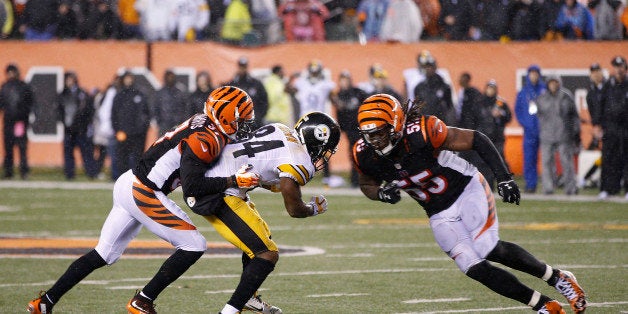
The movie, Concussion, featuring the story of Pittsburgh Steelers legend Mike Webster, has sparked much debate and discussion in the media, in the locker rooms, and among parents, players and coaches.
And this is a good thing, as long as we separate fact from fiction and certainty from speculation.
Concussions that result from contact sports affect not just football athletes, but potentially all athletes in all sports. The quest to learn the truth about concussions, repeated brain trauma and the long-term effects of these types of injuries on the health of the brain is challenging the best and brightest minds to conduct ground-breaking research, producing a wealth of information that we simply didn't have only a few short years ago. I can tell you that this research and knowledge certainly didn't exist during my time in the NFL from 1987 to 1994, when I played for the Pittsburgh Steelers, and then the Chicago Bears, before sustaining two massive concussions in a four-week period that ultimately ended my career.
I was one of the first group of NFL players with the Steelers to establish a baseline with cognitive testing. After my second concussion in 1994, I was examined by Dr. Joseph Maroon, a nationally renowned neurosurgeon and longtime physician for the Steelers organization. I was hopeful I would be playing the next season, but his diagnosis -- based off of my poor results when I retook the cognitive test -- was definitive and his message was clear -- my next hit could be my last. His strong and direct recommendation, although not what I wanted to hear, was to stop playing the game I love so much. My career in the NFL was over.
It's been almost four decades since the playing days of Mike Webster and over 20 years since I left professional football. Since then, there have been numerous changes to the game, significant improvements in equipment, dramatic advancements in concussion testing and research, and effective new treatments.
Perhaps most important is the priority placed on keeping players off the field until they are properly treated, completely healed and cleared by a physician. This kind of care was not the standard of care during my time in the NFL. Why? Because the research we now have for treating concussions simply did not exist. Evidence of these changes can be seen by the fact that the term 'concussion protocol,' a phrase once completely unheard of, is now a permanent and prevalent term in daily football lingo.
As a former player forced to end a career due to concussions, and the father of a football athlete at BYU, I have followed this issue very closely and I believe it is undisputed that we have seen great progress in identifying and treating concussions. And we owe it to every athlete that takes the field to make sure that continues.
Too often, acknowledgment of the life-long values that competitive sports bring to the lives of our youth gets lost in the concussion discussion. The values I learned from football -- discipline, tenacity, work ethic, respect, and teamwork -- are principles I have carried with me my entire life. Now some are suggesting that we keep our youth athletes from playing any type of contact sport until they reach the age of 18. Not only does this ignore the consensus among the medical community regarding the need for physical activity to remain healthy, it would deny our young people from experiencing benefits that will significantly enrich their lives.
I believe the most important job any of us will ever have is being a parent. And when it comes to the safety of our families, we should always err on the side of caution. Are there inherent risks in playing football? Of course, because there are risks playing any contact sport, including soccer, wrestling, hockey, and lacrosse. The same can also be said for skateboarding, skiing, snowboarding, or just riding a bicycle. But it does not mean that we should shun these activities. It means, as parents, we have the right to decide what is best for our own children and we have the responsibility to educate our children to take the proper precautions.
This means making sure our children use the right equipment, play for coaches who train players properly and follow medically based guidelines, and teach our young athletes to have the courage to take themselves off the field when injured.
The benefits of playing sports greatly outweigh the risks. But only, when we play smart.
Merril Hoge played eight seasons in the NFL, first for the Pittsburgh Steelers from 1987 to 1993 and then for the Chicago Bears until 1994. He joined ESPN in 1995 and has enjoyed a successful career as a football analyst and sideline reporter.